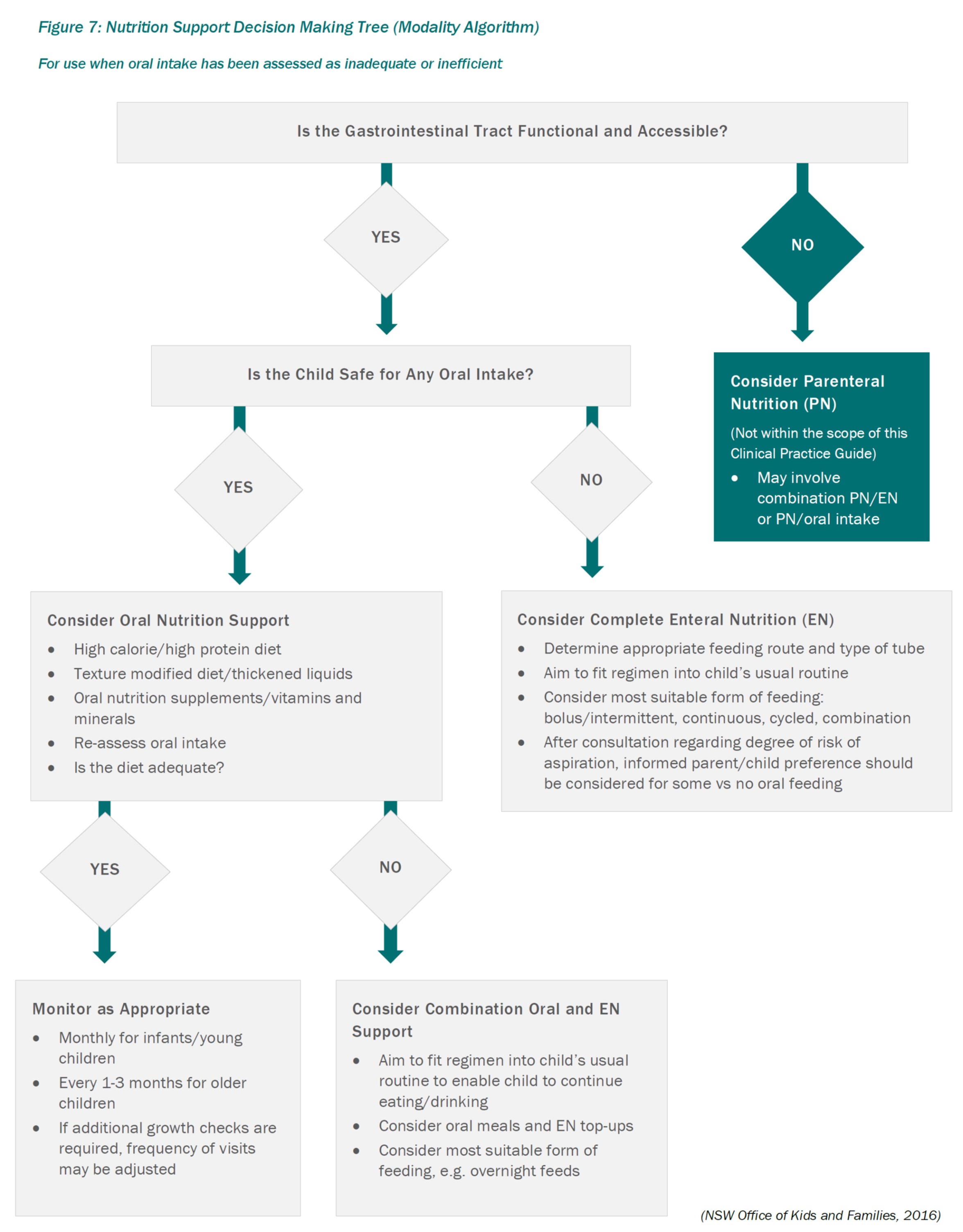Supporting Adequate Growth
It is important to explore the parents’ perceptions of their child’s growth in relation to the child’s feeding history. Discuss anthropometrics and reinforce typical growth patterns in relation to the child’s growth.
Appropriate assessment of growth patterns will help to determine the child’s risk of malnutrition (Dietitians of Canada and Canadian Paediatric Society, 2010) (Becker, et al., 2015). The World Health Organization Set 2 charts represent a growth standard and are used in AHS. The Fenton Growth Chart is used to monitor growth of preterm infants from 22 to 50 weeks. Disease specific growth charts should only be used in conjunction with standard growth charts, not by themselves (Nutrition Services, 2023). Note that breastfed infants grow differently compared to formula fed infants and this should be a consideration when interpreting growth patterns. Frequency of growth monitoring is outlined in the AHS Childhood Growth Measurement Protocol.
Refer to:
Childhood Growth Measurement
Childhood Growth Monitoring Training and Resources
Growth Monitoring Summary Sheet
If a child is malnourished, child-specific nutrition interventions to target improved nutrient intakes should be implemented. Consider what the child can manage or will accept (Alberta Health Services, 2017). A high calorie high protein diet, food fortification, texture modification, oral nutrition supplements, and/or vitamin and minerals supplementation should be considered for infants and children with inadequate intake.
In the presence of malnutrition, chewing and/or swallowing issues may be present due to muscle and fat loss, which may impact the texture and types of foods the child can manage. Explore whether the family has food insecurity impacting access to sufficient, safe, and nutritious foods to meet their nutrition needs for health and adequate oral intake.
Refer to:
Nutrition Guideline - Household Food Insecurity
Free Food in Alberta
If oral nutrition support is inadequate, inefficient, not safe, and/or does not meet nutritional requirements for adequate growth, consider enteral feeding. (See Figure 7).

